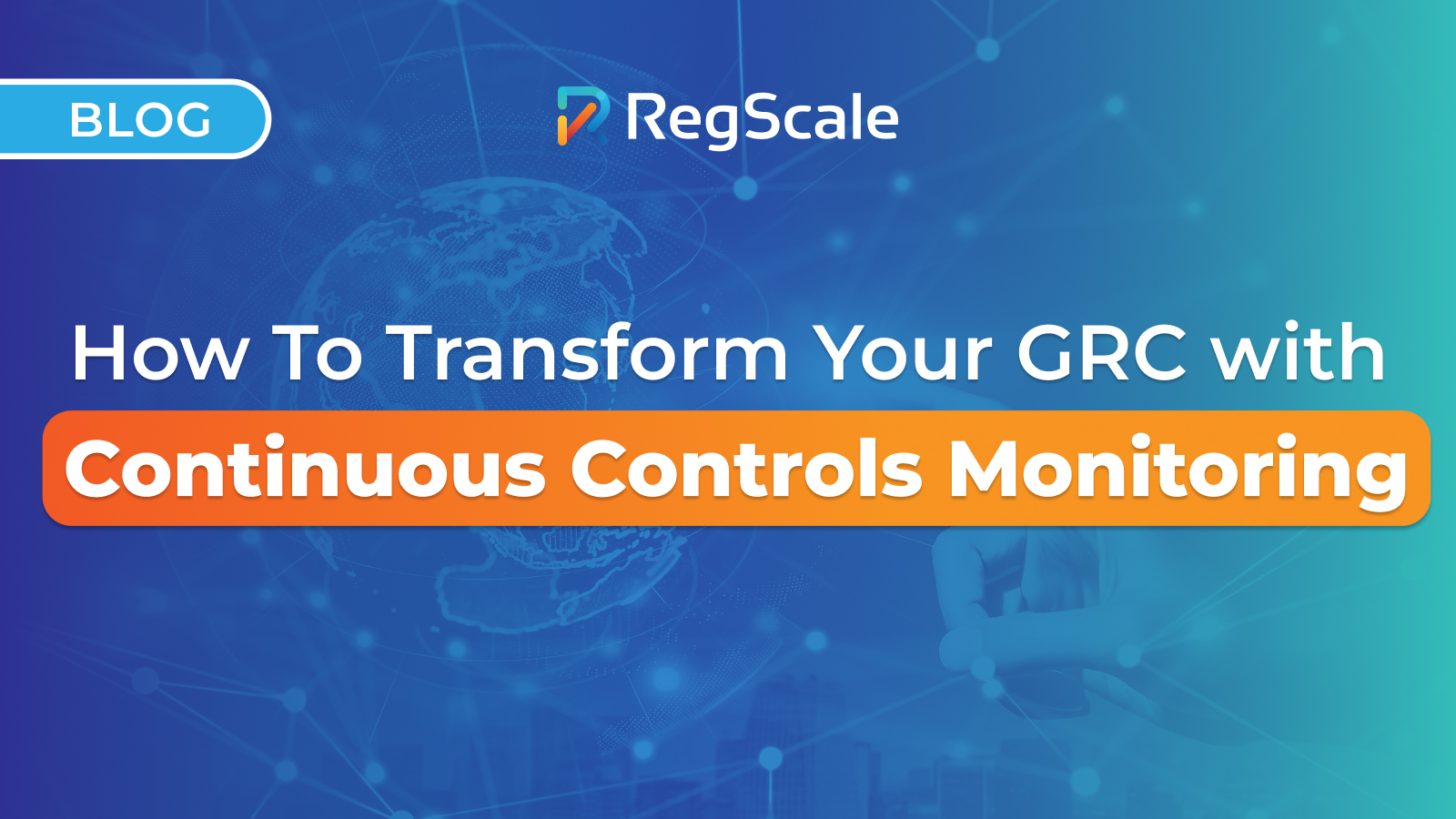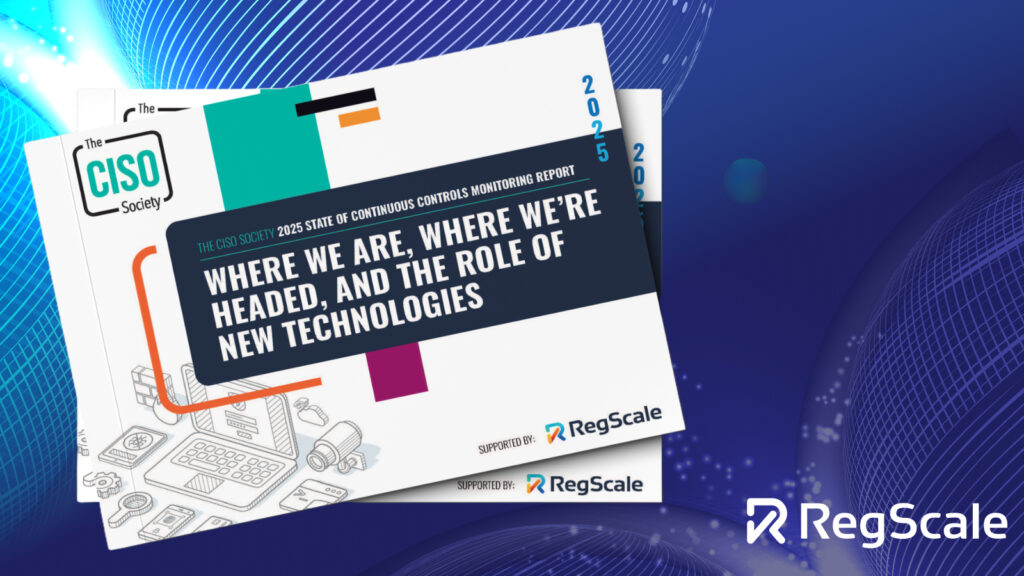Overwhelmed audit teams.
Lengthy control processes.
Increased regulatory scrutiny.
Today, organizations are facing mounting pressure to strengthen their security posture while managing an ever-expanding web of compliance requirements. Manual processes are breaking under the strain, and traditional workflows can’t keep pace with evolving cyber risks.
As companies struggle to mitigate risks effectively, many are searching for a more proactive approach to compliance management. Enter Continuous Controls Monitoring.
Also known as CCM, Continuous Controls Monitoring offers a way forward in the current GRC landscape. Below, we’ll explain what CCM is, why it can benefit organizations across a broad range of sectors, and how to get started with implementing it.
What is Continuous Controls Monitoring?
Continuous Controls Monitoring (CCM) is a sophisticated GRC approach that helps businesses automatically monitor their security controls and compliance processes in real-time. constant oversight of internal controls, enabling companies to immediately detect and respond to policy violations, operational inefficiencies, and other issues.
At its core, CCM functions like a digital watchdog, using automation to constantly evaluate compliance activities and compliance-related business processes. It leverages advanced analytics, artificial intelligence, and machine learning to produce actionable insights across multiple systems and departments.
When implemented strategically, the real-time monitoring capabilities of CCM streamline how companies manage risk and compliance, reducing audit costs and enhancing security across the organization.
What CCM means for GRC
In our industry-first State of Continuous Controls Monitoring Report, a majority of the nearly 200 CISOs surveyed noted that compliance was not embedded into their CI/ CD pipeline. What’s more, a staggering 80% admitted to unnecessary duplication in their compliance efforts.
CCM offers a way forward.
By integrating CCM into control frameworks, organizations can transform their compliance management landscape from a series of disconnected activities into streamlined, automated workflows. This enables real-time visibility into compliance status across multiple regulatory requirements, frameworks, and standards — from SOX and GDPR to industry-specific regulations like healthcare’s HIPAA or financial services’ PCI DSS.
The impact of CCM on GRC is particularly profound in reducing redundant compliance efforts. Instead of conducting separate assessments for different compliance requirements, organizations can leverage CCM to map controls across multiple frameworks simultaneously. (For example, a single access control monitoring system can provide evidence for SOX compliance, ISO 27001 certification, and GDPR requirements, eliminating the need for separate testing and documentation processes.)
What are the benefits of implementing Continuous Controls Monitoring?
In our State of Continuous Controls Monitoring Report, 94% of CISOs said CCM will be a major positive for their compliance and security programs. Why? Because CCM offers a number of significant benefits for GRC programs across sectors.
More accuracy. By automating the monitoring process, CCM significantly reduces the manual effort required for control testing — which means a corresponding drop in human error. This increases the accuracy and consistency of control evaluation. (For instance, RegScale’s RegML control documentation improves accuracy by 80%.)
Better visibility. Another key strength of Continuous Controls Monitoring is its ability to provide comprehensive visibility across an entire organization. From financial controls and cloud security to operational processes and regulatory compliance, multiple control types can be evaluated simultaneously by CCM.
Less manual effort. The automation capabilities of CCM also dramatically reduce the manual effort traditionally associated with GRC activities. By automatically collecting and analyzing control data, generating compliance reports, and maintaining audit trails, CCM frees up GRC professionals to focus on strategic initiatives rather than routine compliance tasks.
Enhanced maturity. Continuous Controls Monitoring also accelerates the maturity of an organization’s GRC program by providing continuous assurance rather than point-in-time compliance validation. This shift from periodic assessments to ongoing monitoring means that compliance teams can identify control weaknesses immediately, rather than discovering issues during annual audits.
Continuous Controls Monitoring: common use cases
Organizations across industries are leveraging CCM to transform their GRC programs. While the applications of CCM are diverse, several key use cases have emerged for organizations seeking to enhance their risk management and compliance capabilities.
Use CCM to manage the rapid pace of regulatory change. As new regulations emerge and existing ones evolve, CCM solutions can quickly adapt to new controls. For instance, if the CCPA or GDPR changes, CCM can automatically adjust monitoring criteria and alert the relevant stakeholders, ensuring continuous compliance without the need for extensive manual updates.
Use CCM to improve accuracy in your compliance program. By removing human error from the equation and implementing consistent, automated control testing, organizations can achieve more accuracy across the board. Applying standardized rules and automation eliminates the inconsistencies often found in manual testing processes, providing more reliable validation.
Use CCM to break down data siloes. Continuous Controls Monitoring allows different departments — from IT and security to finance and compliance — to access the same data and insights in real-time. This transparency in turn fosters better decision-making between teams and enables faster, more coordinated responses to any issues that arise.
Use CCM to reduce costs. Lastly, CCM can help organizations reduce costs by cutting down on manual processes and minimizing the hours spent on low-value testing. However, automation doesn’t just reduce operational costs; it also helps avoid the potentially massive expenses of compliance failures, regulatory fines, reputational damage, and remediation efforts.
At the end of the day, Continuous Controls Monitoring offers numerous ways to revolutionize GRC: streamlining audits and outcomes, proactively identifying vulnerabilities, providing near real-time assessment, and more. It’s the “secret sauce” that reduces audit fatigue and saves practitioners months — even years — in compliance processes.
How to get started with CCM
By now, the benefits of Continuous Controls Monitoring may be clear. But how do you implement CCM at your organization?
First, you’ll need to have controls in place — whether they’re defined by frameworks, your own internal policies, or a combination of both. Think the NIST Cybersecurity Framework, PCI DSS, ISO 27001, and more.
Then, you’ll need to choose a CCM solution that aligns with your organization’s specific needs and objectives. Look for platforms that offer comprehensive dashboards providing real-time visibility into your control environment. These dashboards should present key metrics in an intuitive format, allowing stakeholders to quickly assess control effectiveness and compliance posture.
You’ll also want to prioritize platforms that offer flexible integration capabilities with your existing systems and tools. The solution should be able to aggregate data from various sources — including security tools, IT systems, and business applications — to ensure comprehensive coverage and eliminate blind spots in your monitoring efforts.
Additionally, look for CCM solutions that offer automated alerting and prioritization features. The platform should help you focus on what matters most by automatically flagging critical control violations and prioritizing issues based on risk level and potential impact. This capability ensures that your team can respond quickly to the most significant control failures and maintain a robust security posture.
RegScale’s award-winning CCM platform
Our Continuous Controls Monitoring platform leverages AI and extreme automation to help organizations take advantage of CCM, eliminating the traditional paper-based GRC processes that drain resources and create data silos.
With automated evidence collection and near real-time insights, RegScale helps companies accelerate their certification processes, reduce operational costs, and strengthen their security posture.
Want to learn more? Explore how to future-proof your GRC program and stay agile in the face of regulatory challenges with our CCM resources.
Ready to get started?
Choose the path that is right for you!
Skip the line
My organization doesn’t have GRC tools yet and I am ready to start automating my compliance with continuous monitoring pipelines now.
Supercharge
My organization already has legacy compliance software, but I want to automate many of the manual processes that feed it.

